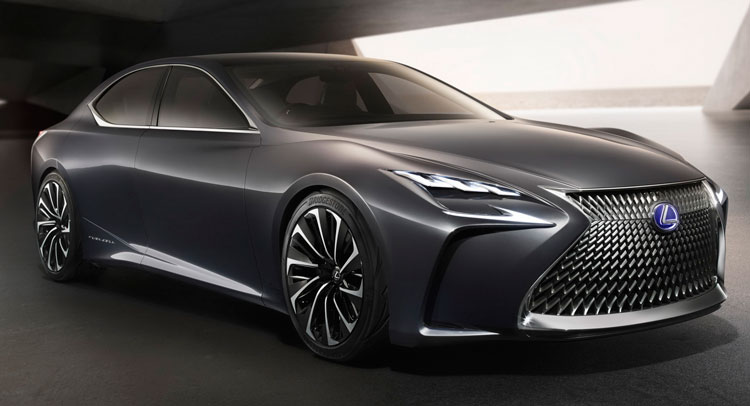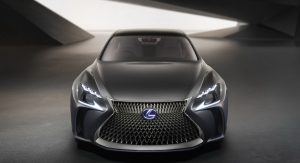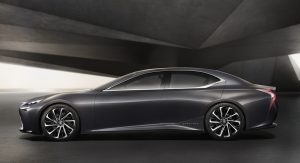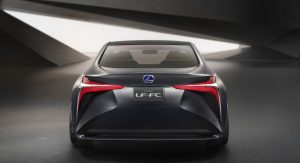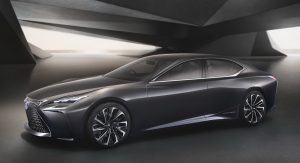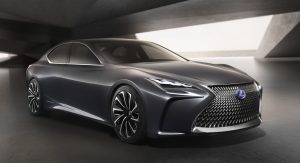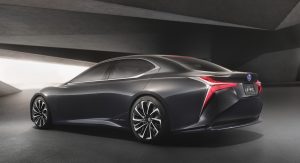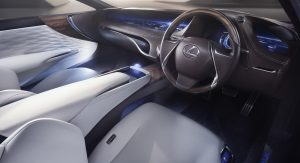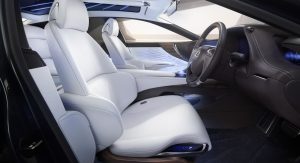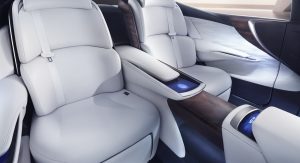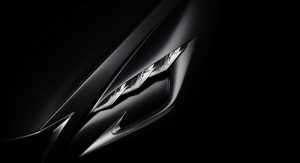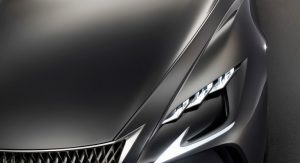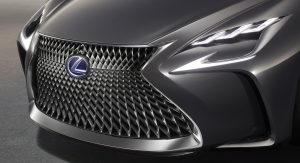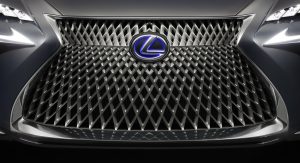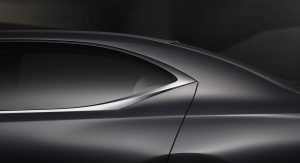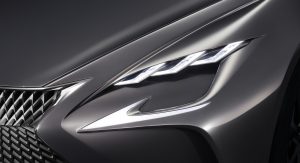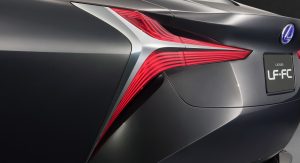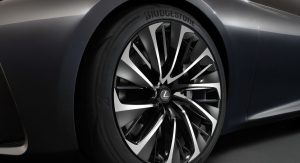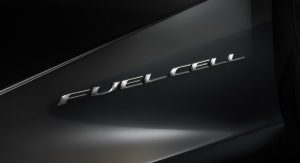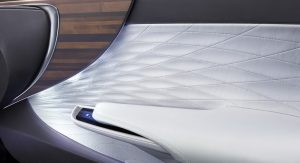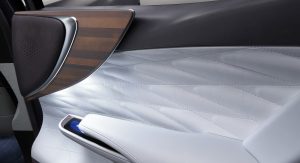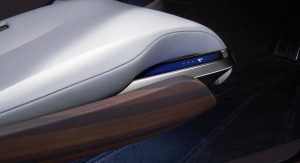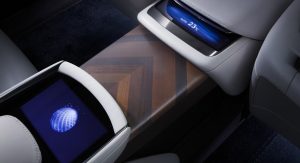Revealed last year in Tokyo, the LF-FC will spawn a production version before the end of the decade.
The study is part of the company’s plans to have a hydrogen-powered car in its range by the end of the decade.
It uses a high-output fuel-cell powertrain, with a motor driving the rear wheels and electricity sent to the two front in-wheel motors. This allows for precise torque distribution between the two axles,while the power control unit at the front, fuel cell stack at the rear and T-shaped hydrogen tank contribute to “perfectly balanced handling characteristics of a sporting sedan“.
The Automated Driving Technology is designed to reduce fatigue, ensure highway safety and lower traffic congestion. It has all the necessary operations for highway driving, including lane keeping and changing, merging, speed adjustments and overtaking.
Lexus highlights LF-FC’s fresh styling theme, with its dynamic lines, triple LED headlamp clusters, the firm’s distinctive grille, arrowhead motif DRLs, new lamp design at the rear, slim glasshouse, sweeping roofline and 21-inch wheels.
Inside, it features an innovative control system, which can be operated by hand gestures and eliminates the need to press the touch panels. The next-gen interface provides a more comfortable driving experience, using sensors to detect the driver’s movements, analyze the images and complete the control operation.
The production version of the LF-FC will replace the LS and it will compete in the same segment as the Mercedes-Benz S-Class, BMW 7-Series and Audi A8.



